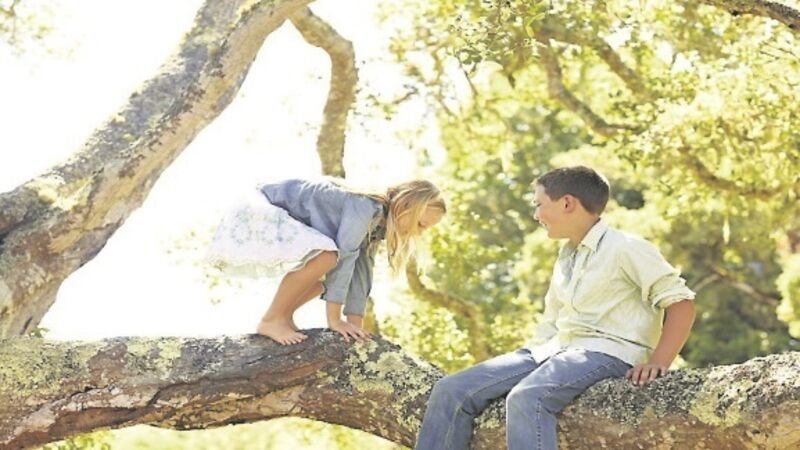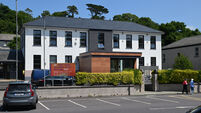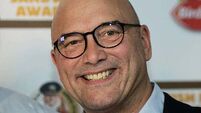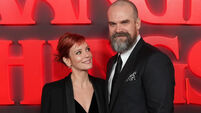Risk-taking and scars were a child’s rites of passage and still should be

IF YOU have never had to attend the Royal Victoria Eye and Ear Hospital in Adelaide Rd, Dublin, you don’t know what you’re missing. It is the most beautiful building, all detail and elaboration and red brick, with a proud history, of which, until I encountered it up close and personal recently, I had no knowledge.
Even though the offices of my company overlook the car park of the Eye and Ear, I had no idea that the latter had been founded in 1896 and was an amalgamation of two earlier hospitals.
One was the National Eye Hospital, founded in 1814 by one Isaac Ryall. The other was St Mark’s Ophthalmic Hospital for Diseases of the Eye and Ear, founded by Sir William Wilde in 1844. Sir William was an award-winning eye surgeon, archaeologist, author, husband of a headbanging poet who wrote under the name Speranza, and father of Oscar Wilde.
He was also a randy old goat who fathered children right, left, and centre before being accused by the daughter of a colleague of seducing her under chloroform. (Speranza paid two thousand quid — a massive sum at the time — after being sued by the young woman. Unsuccessfully, perhaps due to the randy old goat refusing to testify in his own defence.)
There is no excuse for this excursion into the sex life of a long dead eye surgeon other than to serve as a corrective to the myth of sexual inhibition in Victorian times. Despite being prissy enough about sex to put frilly trousers around table legs, lest they give men bad thoughts, they managed at the same time to produce just as many unfaithful spouses as we have today, without the benefit of Ashley Madison, and just as many complaisant WAGs.
Setting all that filth to one side, the fact is that generations of Dubliners grew up believing that there was a hospital somewhere in the city called the Ioneer and used on birthdays and at Christmas as a warning: “Wave your sword that close to Jason and I swear to God he’ll end up in the Ioneer.”
A few weeks ago, the man in my life was told to head to the Eye and Ear because he had developed an eye problem. Which gave us an experience of perhaps the one hospital in Ireland where A&E is permanently bursting at the seams but almost nobody ends up on a trolley.
We were given a numbered ticket that implied we might win something and sat down. Himself couldn’t see or read anything, so it was left to me to read mobile electronic signs which not only suggested that it was time to abandon hope, but also to be nice about it.
“You know what that means,” a woman close to me asked, nodding at the sign. I shook my head. “If you’re not bleeding, you won’t be seen for eight hours.” It had the ring of truth to it, although the man in my life didn’t get bothered, because he had gone all nostalgic, recalling the time when one of his brothers, as a six year old, had ended up in the Eye and Ear having inadvertently introduced a thorn into his eye. In the spirit of familial sharing, the man in my life mentioned this to the thorn brother last week.
“Yeah,” the brother said.
“That was when I lost the sight in that eye.”
“You did?”
“Yeah. Since then I see only out of the other eye.”
Now, these are in-laws and so I take no personal responsibility for them, but it did surprise me to find out that his own brother had noted a thorn and a hospital visit but — over the ensuing 50-plus years — managed to miss that the man involved was blind in one eye. Maybe he managed to miss it because the brother isn’t much for complaining.
Maybe because said brother’s career — sporting and professional — doesn’t seem to have been impacted by him having only one working eye. It doesn’t matter. What matters is that no fuss was made of it, then or ever. It was just one of the ordinary things that happened in childhood.
Until relatively recently, childhood was a time when risks were taken. Kids rode bicycles on the top of the wall over the railway line. They roller skated without knee pads. They rugby-tackled each other. They climbed trees.
In the process, they learned balance and athleticism and a solid appreciation of danger. Mark Twain remarked that a cat that burns its paw on the stove won’t just avoid hot stoves, but will avoid all stoves. Children are more subtle in their learning, and also, in the past, took pride in their scars. Those scars were evidence of the rite-of- passage that is childhood.
But they learned something else, too, that is not vouchsafed today’s children. They learned separation. Talk to anybody over thirty about childhood accidents and one of the things you find is that most of them happened when the child was with other children or on their own. They were taking uneducated risks when they came a cropper. Or larking with another kid out of the sight of adults. That’s increasingly rare, contemporaneously. Adults are ever-present in a supervisory role in children’s lives today. Any separation from parents is a) regarded as a major trauma and b) prevented by a form of pass-the-parcel serial incarceration requiring an SUV as Black Maria.
No distance. No separation. No time to work out who they are, other than Son of or Daughter of.
They are conscripted into a little army of sameness almost from birth. Just as the Netherlands force-grows tulips into Mother’s Day uniformity, so, today, our children are force-grown into uniformity from their days in the crèche. If a toddler in playgroup wants to be on their own or fails to share, that gets marked down for discussion with a parent.
Children today have to be protected. From dirt. From danger. From risk. From solitude. From being tackled.
As a result, more of them will survive to adulthood with the sight in both eyes, without interesting scars and with so pronounced a deficit in solitude that when they get to be teenagers, they will retreat into their bedrooms and hide there for days on end to make up for the years of forced company.
Except the ones who have spent their secondary school days playing touch rugby rather than real tackles, who, the day they meet the All Blacks, are going to be pulped into smithereens by them.
The current regime seems like an impoverished childhood, especially since we now learn, courtesy of ESB Tree Week, which starts today, that one third of Irish children have never climbed a tree.
Lamenting this on radio this week, Eanna ni Lamnha, the wildlife expert, harked back to a time when parenting consisted of turfing the kids out the door with the instruction: “Don’t come back in unless you’re bleeding.”
It wasn’t uncaring, that approach. It was based on the reality that children never learn independence or risk-management if they’re not let loose to climb a tree or fall out of it.















